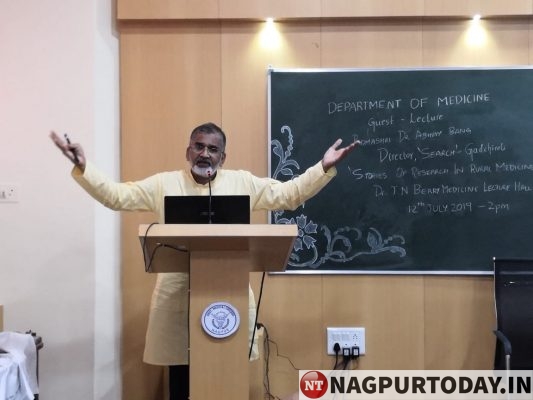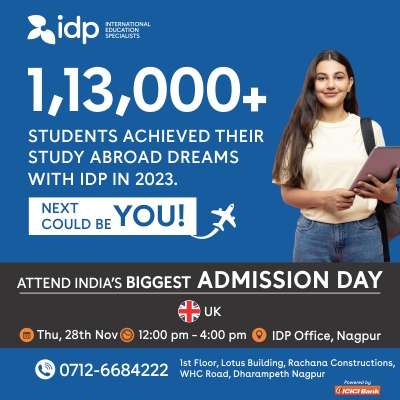
Nagpur: “When it comes to research in medical filed, a doctor should choose work in an environment where problems galore and not facilities in abundance. Facilitates ultimately eliminate problems and sans problem no doctor can master an art of curing. And hence it is important to reach out for the people living in critical conditions, rather than seating in comfortable surroundings” said Padmashri Dr Abhay Bang, Director, SEARCH Gadchiroli, here on Friday.
Bang was speaking in a guest lecture programme on the topic ‘Stories and research in rural medicine’ organized at Dr J N Berry Medicine Lecture Hall in Government Medical College and Hospital (GMCH). Dr Sajal Mitra, Dean (GMCH), Dr Y Bansod, HOD Medicine Department and Dr Rajesh Gosavi, Medical Superintendent were present on the dais on this occasion.
“Earlier the method of research used to be ‘research on the people’; we have to work hard to change such methodology by initiating ‘research with the people’. And our motive should be to reform rural parts in such way that in future research would be carried out by the people,” stressed Dr Bang.
On how he and his spouse Rani brought down Gadchiroli district’s infant mortality rate (IMR) from 121 to 30 in a decade long struggle with the help of local woman Dr Bang further added, “Rani and I got back from United States in 1984. And in 1986 we decided to reach out people from Gadchiroli district. In early days of our research we took some local blood samples and discovered high content of Sickle Cells among the locals. However, when we offered them cure, they deliberately denied our help stating that it’s not our problem. It is when I realized that reaching out to people and educating them about the problems they are facing are more important than to cure them on the first place.
“Owing to which Rani and I started interacting with people in the night next to bonfire, to get a glimpse of their perspective about modern healthcare and what are their aspects of cure. It is when we decided to build hut like hospitals in the villages and with the help of local woman who we commonly referred as dai (babysitter) we started reaching out to newborns and their mother to educate them. In 1988, the district’s IMR stood at 121 per 1,000 births, among the highest in the country. But with the help of dais, we managed to surprise policymakers both in India and abroad. The IMR in the district saw a steep fall to 30 following the total efforts of people along with the help of our home-based newborn care (HBNC) model.”
By Shubham Nagdeve















